They might be unforgivable, vicious insurrectionists in the eyes of dictator Chiang Kai-shek (蔣介石), but the political prisoners on Green Island played a pivotal role in the local economic, agricultural, medical, educational and cultural development.
The premiere of director Hung Lung-pang's (洪隆邦) documentary film, One Day on Green Island (綠島的一天), at a human rights memorial last Friday offered a rare insight into the close friendship that developed between the island's residents and the prisoners.
Political prisoner Ouyang Wen (歐陽文) said: “We saw topless women when we went ashore, so we thought they were Aborigines.”
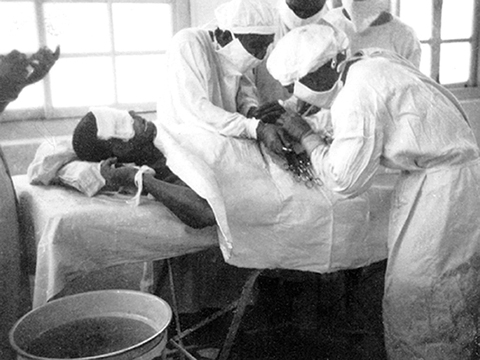
PHOTO TAKEN BY FORMER PRISONER CHEN MENG-HE
The women turned out to be emigrants from Little Liuchiu in Pingtung County and China's Fujian Province who were too poor to buy clothes. They could only take the red clothes offered by fishermen at the Guanyi Temple after a big haul of fish and with the god's permission through divination blocks to cover the lower part of their bodies.
The prison had no walls when the first batch of political prisoners arrived on the island on May 17, 1951.
The officials told the local residents: “You would be colluding with communists if you talk to the prisoners.”
Later, the prisoners collected stones from the sea and built walls to block themselves in.
Because of the strong sea wind and heavy fog, the island's residents could grow nothing but peanuts and yams.
After eating moldy food shipped from Taiwan for more than a year, the officials could not take it anymore. They ordered prisoners who had doctorates in agriculture to form a team and take charge of growing tomatoes, pumpkins, water spinach and other vegetables, while raising turkeys, pigs and sheep at the same time.
They also exchanged vegetables with fish from the local fishermen.
The “Green Island” soybean sauce that the island continues to sell to this day was originally produced by then-prisoner Huang Chung-hua (黃仲華).
Former prisoner Mao Fu-cheng (毛扶正) said that their farming tools, such as sickles and hoes, were all made of melted scrap iron taken from the demolished US passenger liner SS President Hoover ran aground in 1937.
The number of prisoners on Green Island was once as high as 2,000, accounting for two-thirds of the island's total population. More than a dozen were doctors from National Taiwan University Hospital, who asked their families to send equipment and medicine and set up a temporary clinic to treat other prisoners, officials and local residents.
Tien Fen-lai (田份來), a local resident, recalled a woman suffering from difficult labor, with the baby dying in her womb. With the help of the prisoner-doctors, they were able to take out the baby and save the woman's life.
“Many of the prisoners were talented,” said Lin Deng-jung (林登榮), a retired teacher from Green Island Elementary School.
He said that officials once assigned a dozen of the prisoners to teach different subjects at a local elementary school. This boosted the enrolment rate, with 19 of the 20-plus students successfully entering junior high schools in Taiwan. One of the tutors at that time was the famed writer Bo Yang (柏楊).
Some of the prisoners were good at Beijing or Taiwanese opera and Chinese stand-up comedy. They often performed in the local villages.
Chen Meng-he (陳孟和), an art major from National Taiwan Normal University, used native materials that he could find on the island to manufacture violins and guitars, which have been preserved to this day.
Chen was also ordered to take photographs for the prisoners, and family pictures for the local residents at the prison's co-op. Today, the old photos have become rare and precious historical materials.
“The political prisoners' youth was all wasted in Green Island,” the director said, “but they changed the local residents' destiny.”
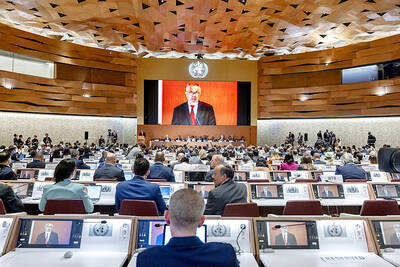
RESOLUTIONS DEBATE: Taiwan’s allies said that UN and WHA resolutions cited by China and other nations ‘do not determine Taiwan’s participation in WHO activities’ A proposal to invite Taiwan to this year’s World Health Assembly (WHA) was rejected on Monday, resulting in Taipei’s absence from the annual meeting for a ninth consecutive year, although partners spoke up for Taiwan’s participation at the first day of the meeting. The first agenda item after the opening was a “two-on-two debate” on a proposal to invite Taiwan to participate at the WHA as an observer. Similar to previous years, two countries made statements in favor of the proposal, while two others expressed their opposition. Philippine Secretary of Health Teodoro Herbosa, president of the 78th WHA, accepted the WHA General Committee’s
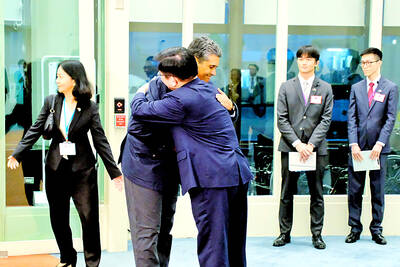
Palauan President Surangel Whipps Jr arrived in Taiwan last night to kick off his first visit to the country since beginning his second term earlier this year. After arriving at Taoyuan International Airport at around 6:30 pm, Whipps and his delegation were welcomed by Minister of Foreign Affairs Lin Chia-lung (林佳龍). Speaking to gathered media, the Palauan leader said he was excited and honored to be back in Taiwan on his first state visit to Taiwan since he was sworn in this January. Among those traveling with Whipps is Minister of State Gustav N. Aitaro, Public Infrastructure
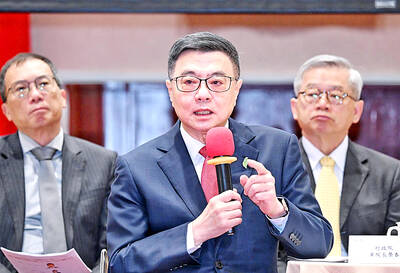
Premier Cho Jung-tai (卓榮泰) on Friday laid out the Cabinet’s updated policy agenda and recapped the government’s achievements ahead of the one-year anniversary of President William Lai’s (賴清德) inauguration. Cho said the government had made progress across a range of areas, including rebuilding Hualien, cracking down on fraud, improving pedestrian safety and promoting economic growth. “I hope the public will not have the impression that the Cabinet only asked the legislature to reconsider a bunch of legal amendments,” Cho said, calling the moves “necessary” to protect constitutional governance and the public’s interest. The Cabinet would work toward achieving its “1+7” plan, he said. The
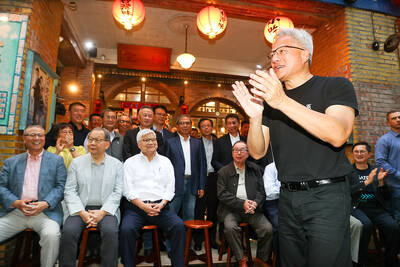
Nvidia founder and CEO Jensen Huang (黃仁勳) hosted a dinner in Taipei last night with key Taiwanese suppliers to celebrate the successful mass production of the company’s new Blackwell AI systems. Speaking to the media earlier yesterday, Huang thanked Nvidia’s Taiwanese partners for their contributions to the company’s ecosystem, while also sharing his plans to meet with Taiwan Semiconductor Manufacturing Co (TSMC) founder Morris Chang (張忠謀). In response to rumors that Nvidia will launch a downgraded Hopper H20 chip for China in July, Huang dismissed the reports, saying, “That is not true.” He clarified that there